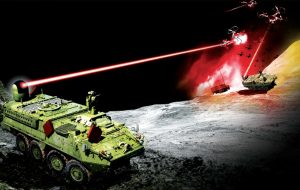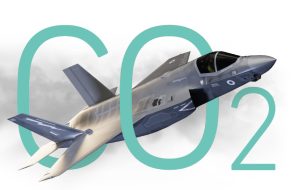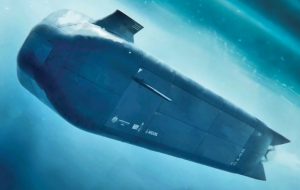Every commander strives to provide his forces with the ability to move swiftly, while restricting the movement of the enemy, using natural or artificial obstacles. Planning for the deployment of military forces and equipment requires identifying the available routes as well as making sure that all the bridges along the way can support the mobility of combat equipment and mechanisms. This major role in counter-movement is usually the purview of military engineers. Even though mobility and countermovement go hand in hand, they are fundamentally different.
Mobility requires building or repairing existing roads, bridges, and railways damaged by nature or the deliberate actions of the enemy, on the other hand, countermovement aims to limit the enemy’s mobility by sabotaging and destroying infrastructure and bridges or laying mines.
While penetrating gaps and providing forces with basic mobility and freedom of movement, is as old as war itself, with the increase in troop movement in our modern age, there has been an expansion in the geographical scope of operations.
Furthermore, the weight of combat equipment and mechanisms has increased dramatically since the 1950s, requiring the development of bridges that can support more weight for longer distances, thus durability, and endurance became key factors in the design and construction of military bridges.
History of bridges
The oldest type of bridge in history was the pontoon or floating bridge, which rests on fixed bases, and while there are diverse historical records regarding the emergence of military bridges, many historians believe that China was the first to use floating bridges for several hundred years BC.
Other civilizations built floating bridges in ancient times, such as the Persians, Greeks, Romans, and Mongols, the most famous of which is Xerxes’ Pontoon Bridge, built by Persia in 480 BC.
The bridge was made of papyrus and linen, extended across the Dardanelles strait that separated Asia from Europe, spanned 3 km, and when it was destroyed by a storm, king Xerxes the Great beheaded the engineers who built it.
The Romans often built more durable military bridges, notably Julius Caesar’s wooden crossing over the Rhine River and Trajan’s wooden bridge over the Danube River.
By the 17th century, bridges were made of leather, copper, and tin not just wood, and during World War II, steel pneumatic buoys emerged.
During the wars of the 19th century and particularly the American Civil War, military bridges were built in great numbers, and while inspecting a 120-meter rail bridge over the Potomac River, which was built in only 9 days, former US president Abraham Lincoln expressed his amazement at the speed of construction.
Military pontoon bridges are usually built in one of two ways, the first is by successively extending outward from the shore, and the second is by constructing entire sections as pontoons before floating them in place.
On the other hand, Truss bridges are used when river banks are steep or where naval movement must remain free, and they are usually built using panels that are easily bolted together.
Military bridges were most famous in World War II, particularly the famous British Bailey Bridge, which played a vital role in the Allied campaign in Italy and had a great effect on the movement of tanks and the progress of the war during the 1940s.
Without the Bailey Bridge, the Allied forces’ successes on the European and Italian fronts would not have been possible.
In the UK the first instance of military bridge construction was in 1277 when King Edward attempted to cross the Menai Strait in Wales to quell a Welsh rebellion by sending 2,000 soldiers to arrest the rebels and seize their supplies.
King Edward assigned the superintendent of the Cinque Port in charge of construction, who in turn used carpenters and shipbuilders to construct a bridge made of several interconnected boats, commonly known as the “Boat Bridge”.
The bridge was well designed, however, poor communication and coordination resulted in the English forces crossing at the wrong time, which led to the failure of the mission when the English forces were caught between the rising tide and opposing forces.
The difference between a military bridge and a civilian bridge
When designing civilian bridges, engineers focus on reducing costs, while in war the main priority is victory, and defeat constitutes the greatest waste of resources.
Therefore anything that contributes to victory and avoiding defeat is justified, no matter the fiscal cost, and thus spending the available resources in war is not a waste as the best form of efficiency is an early victory, and commanders ask their engineers: when will the bridge be ready? rather than, How much will it cost?
On the one hand, civil engineers “build for future generations” and whatever kind of bridge is being built, it is usually constructed as a permanent structure, and depending on available funds and materials, the lifespan of a bridge is usually a measure of the skill of its builder.
On the other hand, military engineers design bridges to meet the needs of the moment, which never exceed the expected duration of the war.
Therefore, military bridges are usually temporary and built in a hurry by military engineers to carry out specific tasks using the available materials.
The main difference between a military and a civilian bridge is construction speed, as military commanders consider time an important factor in any military operation.
Thus the design and operation of military bridges are usually governed by speed, and given that preparations and detailed site surveys are often impossible on the battlefield, military engineers conduct a short survey of the area and begin construction.
In general, many factors come into play in the design of military bridges including cost, manufacturability, reliability, safety, and maintainability, given that the equipment of military bridges is usually used and reused multiple times over several years, and therefore it must be easy to maintain or require minimal maintenance when installed and when in storage.
Furthermore, it has to be reliable once installed, and capable of carrying the required load when the need arises, and if the bridge is flexible and adaptable, it can be used in different gaps, so this flexibility provides many advantages, and it can also be used for pontoon bridges, suspension and other types of bridges.
The bridge is often installed in a variety of locations, so installation speed is critically important, as the bridge is usually used by armored vehicles or infantry the moment it is built.
Therefore the ability to install it and recover it quickly is a key factor in the design of military bridges, along with the ability to endure environmental factors, given that they are used in every climate (snow, rain, and desert) and withstand biological, chemical and nuclear warfare conditions.
Transportability is another vital factor, as the bridge equipment must be transported to the construction site using equipment available for the force using it, which means that long-distance transportability is an increasingly important consideration given the general exploratory nature of modern and potential future operations.
The bridge must also be capable of withstanding any equipment carried by the force using it, whether it is machinery or a heavy equipment carrier loaded with tanks, with considerations such as load distribution, crossing speeds, wind loading, and permissible deflection in mind.
Bridge assessment: Aligning safety with mission objectives
The main purpose of military power is imposing the will of the state through the threat of force, including the use of lethal force, to achieve political objectives.
Therefore, military operations involve exposing the personnel of the armed forces to extreme levels of risk, given that they have to operate very quickly while handling heavy specialized and dangerous equipment and materials (including lethal weapon systems intended to maim or kill).
Furthermore, these forces are regularly exposed to the dangerous actions of the enemy and friendly forces, such as friendly fire, which is considered acceptable in light of the function they perform for the community they serve.
The first lesson that engineers learn in military construction is that time is one of the key factors in military operations, therefore the sole focus of the engineer designing the structure or bridge, is that it can withstand the required weight or pressure, regardless of architectural beauty.
In addition, the engineer has to align the safety concerns of crossing the structure with the acceptable risks of the associated mission, thus there is a series of acceptable safety risks for military machinery and equipment crossing bridges, which in turn provides flexibility in mission planning and execution as well as a basis for the assessment of the bridge in line with mission objectives.
Determining acceptable risks regarding bridges in the context of military operations requires the effective application of critical boundary condition design principles (such as designing load and resistance factors according to the probable loads and resistance indicators, and choosing the appropriate reliability indicators, usually based on acceptable safety risks) and structural design reliability indicators are usually calibrated to design individual elements within a structural system.
When assessing military bridges, the quantification of acceptable safety risks must reflect the unique circumstances, and given the huge liability standards expected of military personnel, the acceptable safety risks are higher for military personnel compared to the civilian population.
Furthermore, exposure to multiple life-threatening situations amplifies the perception of danger, meaning that the risk of crossing unsafe bridges can increase the pressure on the unit in a way that affects its effectiveness, cohesion, and willingness to follow orders, which ultimately has a negative impact on the success of the mission.
Military operations entail a series of interconnected acceptable risks that depend on the conflict, the operation, the mission, and the individual, therefore it is unreasonable to assign a single unified standard for the acceptable risk to personnel in the military operation.
Therefore, the risks to the movement of military units crossing bridges must be acceptable and in line with the acceptable risks for the military operation itself.
Military planners have to take into consideration whether or not there will be civilian traffic present when military vehicles cross the bridge, which would expose civilians to the same risks as military personnel, and so the acceptable risks may be reduced to the standards considered acceptable to civilians, which is usually determined according to the situation.
Military bridges’ classification
Given that military bridges is a broad term it can be divided into several categories:
1- Construction Bridging: made from locally available materials such as wood, stones, or ropes.
2- Equipment Bridging: this category can be divided into floating equipment and dry equipment (commonly known as wet or dry support bridges).
3- Place of bridging: This category can be divided into two types:
– Bridges that are built away from the front lines, in the communication area, and these bridges are very similar to civil construction in peacetime.
– Bridges that are built on the front lines, in areas exposed to hostile fire and raids, and these bridges are determined according to the combat requirements
4 Assault bridging: this is a relatively modern term describing special equipment for building special bridges in an area exposed to direct fire, and it includes types that specify how and where they are used.
– Close support bridge assets: mechanically launched bridges that enable armored troops to cross gaps on the battlefield.
– General support bridges: mechanically and manually launched equipment without armor protection with limited capacity and range.
– Logistical support bridges: mechanically and manually launched equipment without armor protection, similar to general support bridges with longer ranges and a larger capacity, which are usually used on the lines of communication to provide new, replacement, or larger capacity bridges.
Recent improvements to basic types of military bridges have included increased use of aluminum, stronger, more efficient support structures, as well as a significant increase in the use of mechanical installment equipment.
NATO Standards for the classification of military loads for bridges, ferries, pontoons, and vehicles (NATO – STANAG 2021):
The primary measure of a bridge is its weight-bearing capacity, so it is critical to avoid exceeding that capacity to avoid collapsing the bridge, which could result in mission failure.
To help engineers build safe bridges, weight charts for commonly used equipment have been compiled since the early days of bridge design.
In World War I, loads were divided into 4 categories, light, medium, heavy, and tanks, and each category had a specific weight and distance, with axle loads added in certain cases.
In 1987, NATO issued the “NATO – STANAG 2021” standard document, that aimed to standardize the process of classifying military loads for bridges, ferries, pontoons, and vehicles, by providing a standard method for calculating the specific load rating of NATO forces for all military bridges, ferries, helicopters, and military vehicles.
This system consists of 16 categories that take into account the total weight of the vehicle, distance and contact area, as well as the weight of the bridging equipment, the distance between vehicles, safety factors, and dynamic effects.
The system also specifies normal crossing conditions, while allowing for the reduction of safety standards in case of emergency or tactical situations.
» Retired Colonel Eng. Khaled Al-Ananzah
(Advisor and Trainer in Environmental and Occupational Safety)













